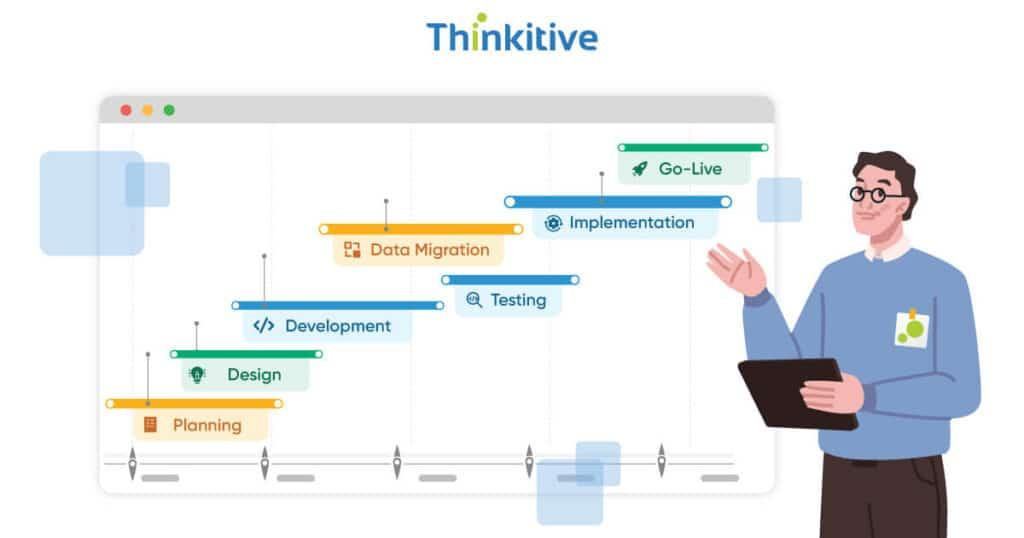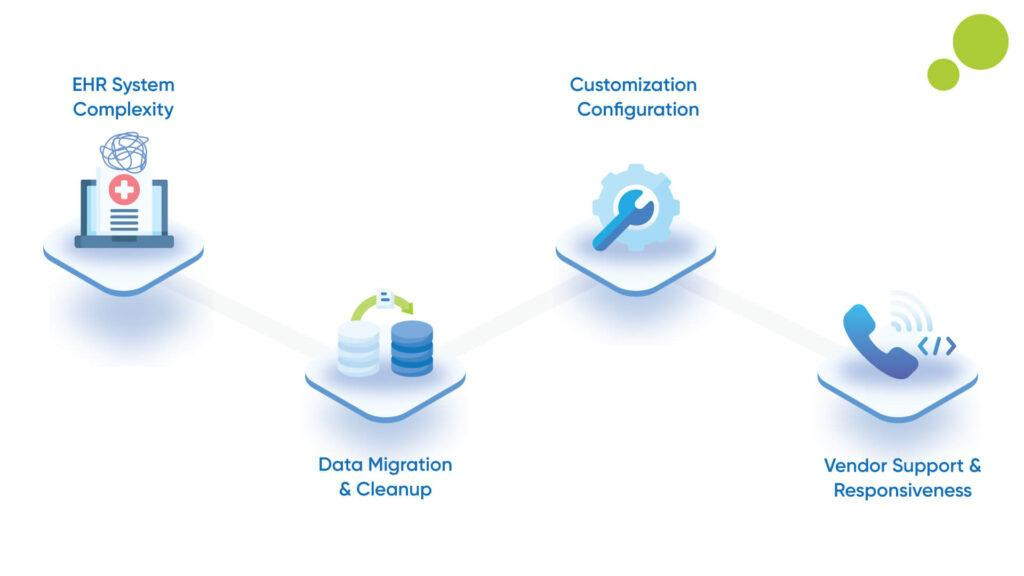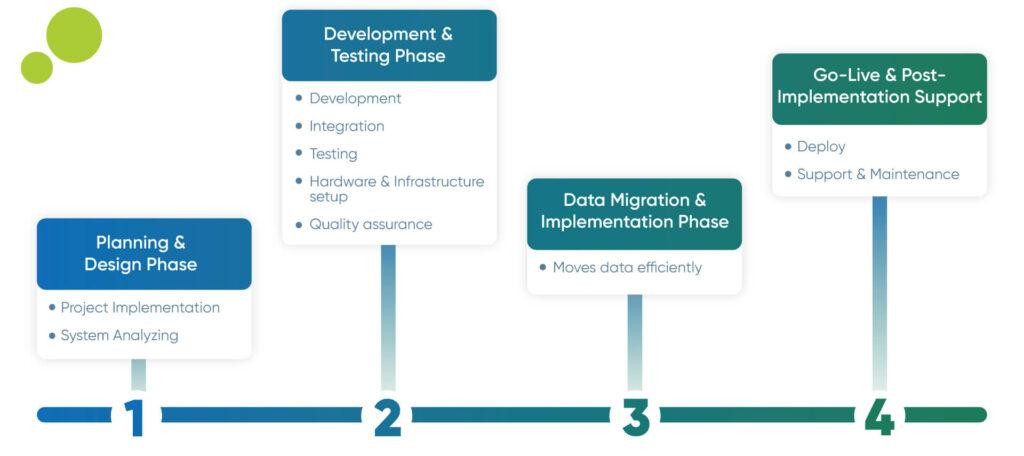
As the healthcare industry is slowly progressing towards a digital transformation, the relevance of electronic health records is becoming predominant. While 90% of the hospitals in the United States have already adopted EHR systems as of 2021, 75% of the doctors state that they have had a significant ease in accessing patient information and delivering care quickly.
You see the time to care delivery playing a major factor here, many healthcare institutions are actively shifting towards custom healthcare software systems. However, to bring efficiency in their day-to-day operations and care delivery, they have to rely on EHR integration.
And for good reasons, the EHR integration is gaining momentum in the digital healthcare landscape. For instance, it improves efficiency in care delivery, reduces the margin of errors in communication and coordination, and has a direct influence on patient care.
However, for all the healthcare providers looking to integrate EHR systems with their custom healthcare software, must know that EHR integration timeline can be stretched if not planned properly.
Here, you might ask what would be the typical healthcare IT project timeline, especially the EHR integration timeline?
Well, it all depends on several factors, from the complexity and number of the systems to the type of data that is being stored in these systems. So, how to plan all these in a minimal time and get a quick estimation of EHR integration timeline?
Let’s see exactly that in this blog below and cover everything from the factors that influence EHR integration timeline to interoperability implementation scheduling and how to minimize time.
So, without further ado, let’s get started!
Understanding the Timeline
Before getting into the intricacies of the interoperability implementation schedule or API integration timeline, let’s first understand the complete timeline.
- Planning and Preparation: This is the first step, which usually spans between two to six months and involves vendor selection, project team formation, needs, assessment and requirements gathering, and data migration planning.
- Implementation: Once the planning phase is complete, implementation will occur, which spans between three and twelve months. Here, the system is configured and customized, then integrated with existing systems, and users are trained after testing and validation of the system.
- Go-live and Post-Implementation: At the last stage, the system is launched and stabilized for effective use. Also, it is after this stage that the system enters the support and maintenance stage. This usually takes the healthcare integration service provider a couple of months, which can stretch up to six months.
Key Factors Affecting Timeline

Now that we’ve got an idea about the timeline and the major components of it. Let’s try to understand the factors and how it can affect the timeline.
Scope of Integration
The factor that has a direct impact on the integration timeline is the scope of integration. Here, the number of systems that you want to integrate your system with and its complexity usually have a direct impact on the timeline. Along with that, the data migration process and the volume of data, along with its complexity, also directly affect the integration process. Along with that, if you are a specialty practice, then the workflow can also need to be reengineered so that it aligns with your system. This can also influence the overall EHR integration timeline to a great extent.
1. EHR System Complexity
In the market, there are several EHR systems which provide electronic healthcare records management. These EHR systems are curated differently and depending on the complexity of the EHR system, the integration is directly affected. For example, if the EHR system is complex, then the integration efforts are more which would naturally require more time, impacting the EHR integration timeline.
2. Data Migration and Cleanup
EHR integration allows the smooth sharing and flow of data from the EHR system to your healthcare system. However, for the data to be shared accurately and be accessible to providers, the data needs to be migrated and cleaned. In this process, the volume of data, complexity of data, accuracy in sharing, and secure sharing of data are some of the factors that might take time. These factors have a direct impact on the HL7 FHIR integration timeframe. That is the reason why data migration and cleanup duration can have a significant impact on the EHR integration timeline.
3. Customization and Configuration
Every healthcare practice works in a unique way which is specific to that organization only. Here, for successful EHR integration, the system needs to be configured and customized to meet the organization’s specific needs and requirements. This customization can not only be a costly venture but also impacts the timeframe of EHR integration and often times even the development.
4. Vendor Support and Responsiveness
Apart from all the factors mentioned above, a factor that crucially affects the EHR integration is the vendor support. A reliable vendor responds to the support requests almost instantly and can speed up the process. Since they will be majorly handling the EHR integration process, their responsiveness will directly impact the project timeline as well as its effectiveness.
Typical Timeline Phases

Since we spoke about effective planning of the EHR integration process, here are the processes or phases that an EHR integration timeline typically includes:
1. Planning and Design Phase
The first step usually involves planning. In this phase the project implementation is planned after gathering all the necessary needs and requirements. Along with that, the system is analyzed to ensure that the further processes are planned accordingly. Once it is done, it is at this stage the project is designed. This is one of the most important phases since it can give you an accurate estimation of the project and EHR integration timeline.
2. Development and Testing Phase
Once the EHR integration process is designed and developed, it is then brought to life by developers. Depending on the requirements gathered during the earlier phase, the integration is achieved. After that, to ensure its accuracy and effectiveness, the integration solution is rigorously tested to ensure....Click here to read more
